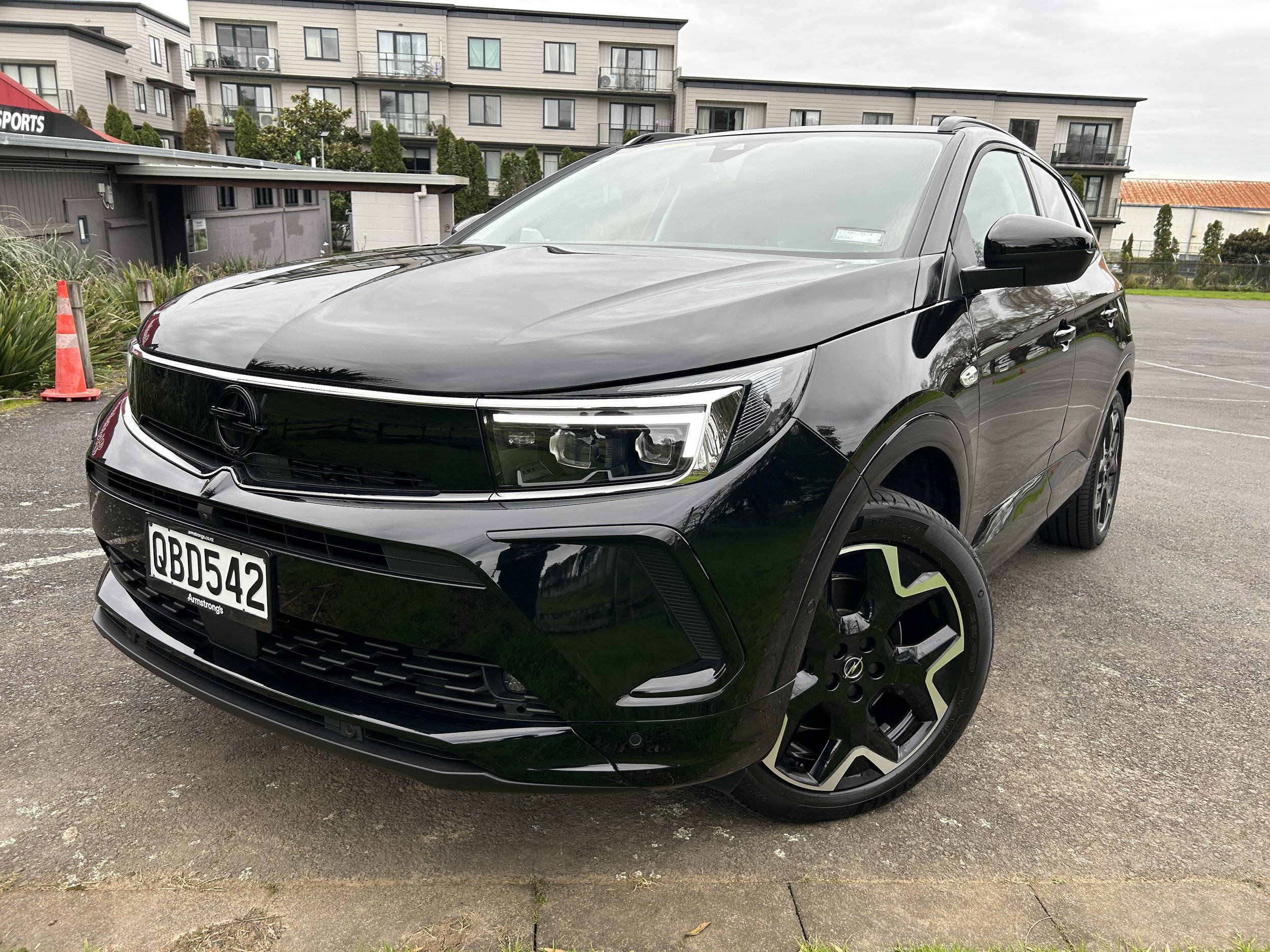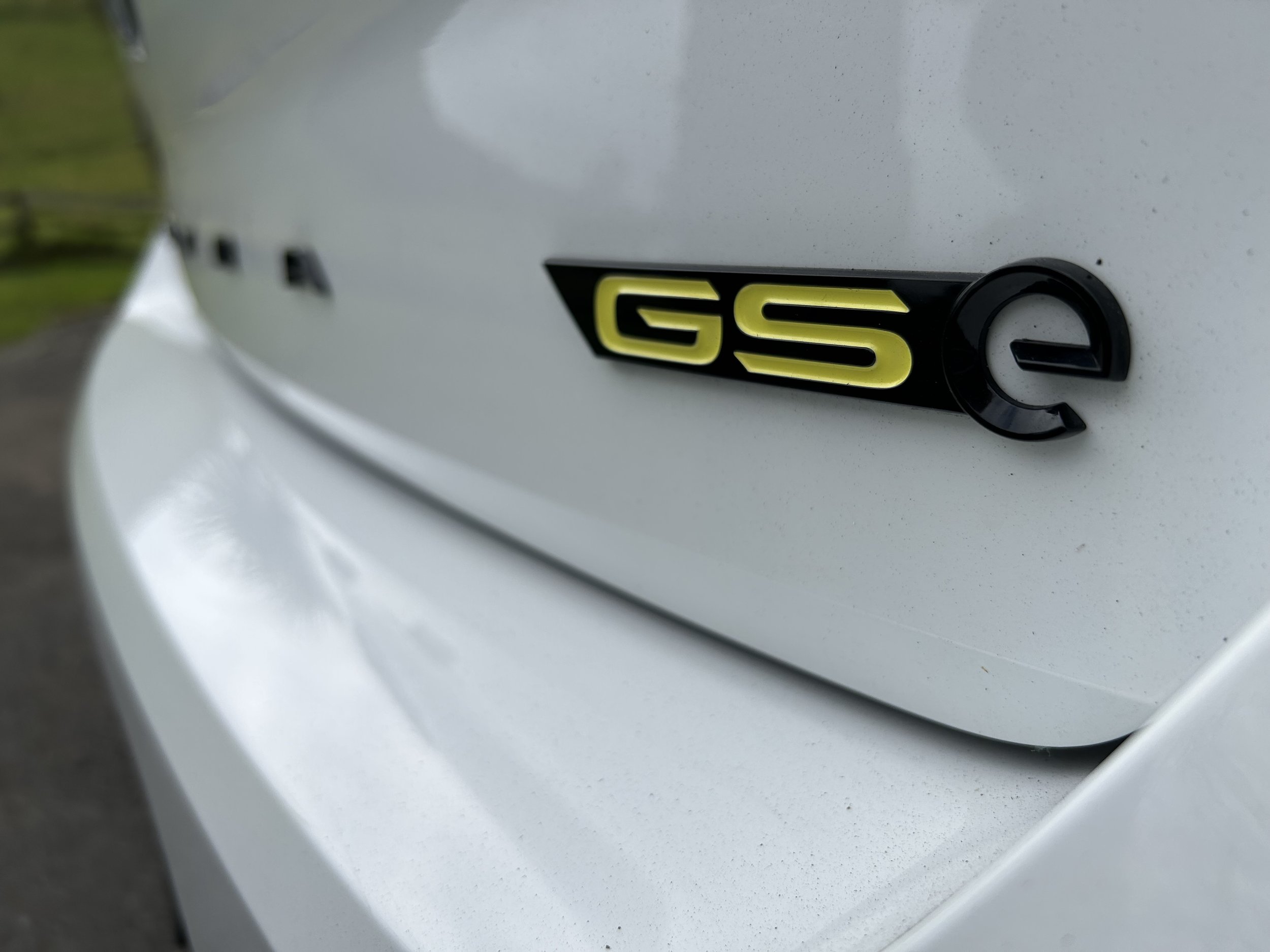Opel Astra GSe and Grandland PHEVs first drive: Preludes to electric dive
/A common drivetrain, in two states of tune, for the latest additions to this German marque’s local fleet.
WHAT would you pay for the latest from Opel, a pair of plug-in hybrids - one performance-themed with a familiar model name, the other a fresh nameplate … near end of its current era?
Auto Distributors, the Armstrong Group operation with rights to the German marque, says it doesn’t intend to make a habit of discounting, not least with scene-fresh product.
Unless that’s unavoidable. Timing dictates why the latest Astra (in white) - now behind the badge of the brand that always designed, and at times built it over all those Holden years - and the Grandland sports utility (the black car) in their plug-in hybrid formats are on special from release.
If all had gone to plan, the two editions of models that each run a 1.6-litre four-cylinder turbo petrol engine with a 81kW/320Nm electric motor, but with different outputs, would have landed earlier in the year.
Instead, they’ve hit local turf right in the middle of a special pricing campaign. Not including in the sticker slimming strategy could have disadvantaged both.
Soooo …. while they respectively hold recommended retails of $71,990 and $77,990, the Astra GSe - for ‘Grand Sport electric’ - kicks off at $64,990 before the Clean Car rebate (which reduces it to $60,965) and on-road costs, while the Grandland will command $69,990 before the rebate (which drops it to $65,965) and on-road costs.
The campaign is ostensibly a ‘get-in quick’ inducement. The idea is that the standard RRPs will be reverted to either when current stock exhausts, or by the end of September, whichever occurs first.
So what happens after that? Astra will likely stick more rigorously to the gameplay. It’s all new, after all. Properly so. Ultimately, this car will sell here in totally battery-fed form, thus making it a petrol, petrol electric and pure electric choice. Not often that happens.
Grandland is heading to a fully electric future as well. But not as we see it now. The car that has just landed is only new to us. In Europe, it’s old hat, having been in production since 2017.
This Grandland is the last of its kind, in that it was developed when Opel was owned by General Motors, born out of a tech-sharing deal that used a chassis and engines shared with PSA Peugeot Citroen.
Grandland had only freshly released when GM sold up its assets in Europe. Opel - at time building the ZB Commodore for Holden - and Vauxhall (which, like the Aussie outfit, simply rebadged the German cars) were bought outright by PSA Group, which then merged with Fiat-Chrysler to form the vast Stellantis conglomerate that holds them all now.
Anyway, it stands as the only Opel with GM genes and Stellantis will drop it next year for a battery-dedicated equivalent with 700 kilometres’ range. Potentially with the same name, definitely all different otherwise.
Auto Distributors is keen to go fully electric. As is, it already only sells Opels with Green promise. Every car in its line-up entirely comprises models that, until the rules changed on July 1, qualified for a Clean Car Discount.
The Grandland production line in Eisenach, Germany, is about to undergo a $NZ174 million refit before it can start making the electric model. Nonetheless, Noah Robertson, Opel NZ’s commercial manager, says current Grandland could nonetheless remain in production until the end of next year and, because of that, supply for this market could well carry into 2025.
The upside is that, Robertson agrees, the factory could well become increasingly flexible on the incumbent car’s pricing. There’s no guarantee, but conceivably the longer it is here, the cheaper it might become. Time will tell.
A little bit of sticker leeway might become advantageous for Opel’s largest car. Intended to rival the likes of the Volkswagen Tiguan and Skoda Kodiaq, it doesn’t on first meeting feel like a total competitor, size and quality-wise.
By not seeing it until now, we at least see updates that arrived in 2022. The big revision externally was an adoption of the 'Opel Vizor' nose, which once the freshened Corsa comes, will span all of its range, while the cabin (above) gained the all-digital 'Pure Panel' dashboard, as shared with Corsa and Mokka.
This uses two digital screens for instruments and infotainment. Before this, Grandland had plain analogue dials. Even so, the display doesn't look as graphically rich nor expensive as you see it in the Mokka, because it’s based on an older version of a common operating system. W hile it's effective, some of the menu layouts take a while to get used to, and the resolution of the reversing camera is so-so.
The event to meet this car partnered with one for the Citroen e-C4 which, as a full electric, took priority. So the Opels achieved a fleeting glance, all in all.
Grandland’s cabin environment demands more exploration. The fit out looks fair, and take not that the front seats have been approved by the German AGR, or Aktion Gesunder Ruken - the Bad Back Society. Buy a fully petrol Grandland and it has a 500 litre boot. Get the hybrid and this capacity drops to 390 litres). The rear seats split-fold 60:40, and there's a central 'ski-hatch' for long, narrow items.
Time at the wheel of both Opels was brief. Though they have the same powertrain, power and torque outputs differ. Astra GSe has 165kW versus 133kW, but less muscle - 250Nm versus 360Nm.
Grandland also ekes slightly more electric range, because while Astra takes a 12.4kWh battery that lends an absolute 61 kilometres, Grandland achieves 6km more, from taking a 13.2kWh unit.
In hybrid operation, when operating optimally - that is, with a fully-charged battery - they each deliver consumption and emissions of 1.0L/100km and 1.0g/km of CO2.
Those astoundingly low results are tempered by accepting how they’ve been determined. While the WLTP test is much more real-world that the previous mandated barometer, NEDC, it still asks for understanding that what’s seen in the lab isn’t so easily replicated on the road. Still, both are eligible for a $4025 Clean Car rebate.
Given this is the car that signals the start of a new electrified performance sub-brand for Opel, opportunity for an adventuresome outing with the Astra GSe would have been welcomed.
Talk of it having chassis changes aimed at appealing to keener drivers sounds promising. On the other hand, 0-100kmh in 7.5 seconds seems a bit meek. Perhaps it’s strength is more in the mid or top range? All this has yet to be determined.
Contrasting black door mirrors and a black roof are part of the look, so too the small diffuser at the rear and the distinctive 18-inch alloy wheels, whose design apparently draw inspiration from some for Opel’s exciting Manta GSe ElektroMod concept. Overall, though, the sportiness is subtle. One interesting element is the absence of visible exhaust outlets. That’s a decision made by Opel to promote the electrification aspect of the GSe line.
The interior includes a set of sports-styled front seats, with seem to be the only items within the cabin with the GSe logo. Unlike most hotties, it hasn’t a GSe start-up screen or even a badge to relate that this is the special one. Bright colours are also absent, regardless that yellow is the official GSe hue.
Back in GM ownership, Opel’s performance aspiration sat behind a now defunct badge: OPC. The hot Astra from that era sold here as Holden Special Vehicles’ cars for a short time. From what has been shared, it seems GSe cars aren’t supposed to be OPC substitutes, but instead are intended to offer a bit of of halfway house between mainstream and maniac.
With GSe, the steering has been tweaked to lend a more direct feel, it gets has Frequency Selective Dampers from Koni and the ride height is also decreased by 10 millimetres. It also takes a sports tyre.
Conceivably, the most punch will come from hybrid mode, whereby the electric motor and petrol engine work together. These and paddle shifters to spur the eight-speed auto along and, in Sport mode, the soundtrack has an augmented edge. A 42-litre fuel tank seems small for a performance hatch, so clearly Opel expects a lot from the electric involvement.
The GSe is the Astra flagship so has a strong spec, with heated seats, a heated steering wheel and a 360-degree camera system for parking. A suite of driver assistance systems also includes. Wireless Apple CarPlay and Android Auto and wireless charging pad implement.
The writer attended this event as a guest of the distributor, with travel and a meal provided.























